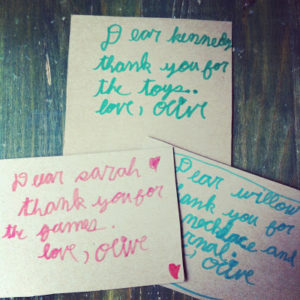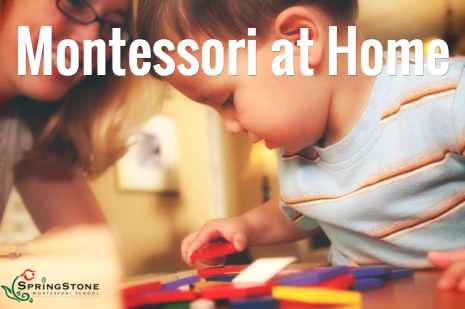A Look at Montessori Values During the Holidays – Teaching Gratitude
Montessori Values – Teaching Gratitude and Being Thankful
With the holidays fast approaching, life is full of hustle and bustle. It is a perfect time to step back and reflect on the many people that contribute to making our lives happier, better, and fulfilled. Showing gratitude is an important part of who we are as human beings. It strengthens our relationships and our connection to our community. Studies show that expressing appreciation makes us happier and more compassionate people.
In the Montessori environment, gratitude is a key component of our peace education, grace and courtesy exercises, and the concept of cosmic education. Dr. Montessori understood implicitly the value in fostering a grateful nature in children and helping them become compassionate citizens of the world.
Helping to Develop Peaceful Montessori Citizens
Although adults understand the worth in expressing gratitude, young children find it more difficult. Gratitude involves being sensitive and empathetic to others, and truly appreciating what others do for you. While children can quickly learn to say please and thank you, it takes time and guidance to help them truly learn to be grateful.
Young children, by their very nature, are self-absorbed. Jean Piaget described children from ages 2–7 as being egocentric, or unable to see a situation from another person’s point of view. According to Piaget, young children primarily think and communicate about themselves. They automatically assume that the experiences and thoughts that they have are shared by others. Even in this egocentric phase, however, children can begin to understand gratitude when they are offered repeated opportunities to experience being grateful.
Here are a few ways you can teach children about gratitude:
- Develop the habit of vocalizing good things that happen. For example, “I appreciate you helping put the dishes away.”
- Model appreciation of others. For example, after you leave the grocery store, you may say, “Wasn’t it nice when that teenager helped us carry our bags to the car?”
- Invite children to help with daily tasks. Even very young children can help set the table, fold towels, feed your family pet, water plants, or wash your family car. The more they help, the more children understand and appreciate the efforts of others.
- Encourage children to help others in the community. Together, go through your child’s clothing and toys to find gently used items to donate to those in need. Invite children to help deliver the items to the donation center or family / children shelter.
- Write thank you notes together. Expressing gratitude in writing helps children think about and communicate why they are thankful. Young children may draw a picture and dictate their letter. Older children may enjoy writing their letter on beautiful stationery or they may prefer email.

- Don’t be afraid to say No. Giving in to constant requests for treats can make children feel entitled, not grateful. Be upfront about what you are going to do ahead of time: “Today, we are going to the grocery store to buy a gallon of milk and some bread. We are not buying candy or toys.” Then, make sure you follow through.
- Involve children in selecting gifts for others. During the holidays, ask children to make gift lists, thinking about what other people would like to receive. Invite them to shop for and wrap the presents, and then to give the presents to the recipients. It is about the gift list taking on the role of our giving list for others.
Teaching children to be grateful and show appreciation takes patience. Gratitude is a quality that needs cultivating over time. Encouraging children to be grateful and modeling its importance is well worth the effort as it lays the foundation for children to develop a positive, optimistic outlook on life.
Happy Thanksgiving!


